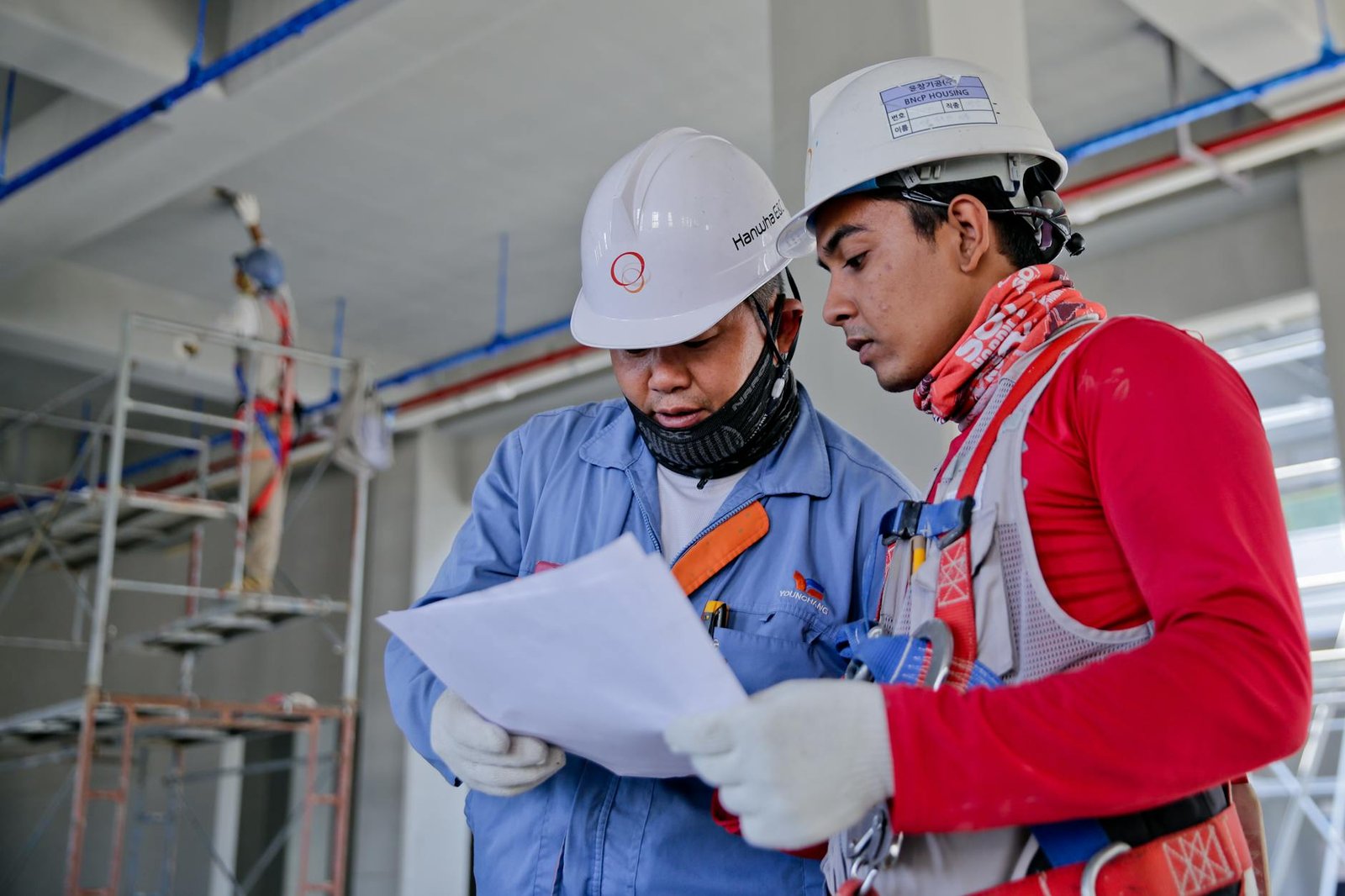System Disturbance Time in Construction
In construction, time is money.
Unsurprisingly, any disturbance causing downtime on a project is a costly affair. This article aims to unpack the concept of ‘System Disturbance Time’, its impact on productivity and cost-effectiveness, and how to manage it effectively.
As Henry Ford once said, “Nothing is particularly hard if you divide it into small jobs.” So, let’s break it down and start by defining what System Disturbance Time is all about, along with its causes. We’ll then delve into how to manage it, analyze its influence on system performance and explore the valuable role of project management. Lastly, we’ll highlight the significance of training, and how cultivating a culture of shared responsibility can minimize this downtime.
Ready to unlock the secrets of managing System Disturbance Time successfully? Let’s dive in!
Table of Contents
Unpacking the Concept of System Disturbance Time in Construction

Defining System Disturbance Time
If you’re a construction newbie or even an industry veteran hoping to polish your knowledge, the concept of System Disturbance Time may sound puzzling. Yet, it’s actually pretty straightforward. System Disturbance Time refers to any period of time during a construction project when the regular workflow gets disturbed. This could be due to troubleshooting technical issues, weather-related disruptions, or any other event that leads to a temporary halt in the smooth function of a construction project.
Factors Causing System Disturbance Time
Now that we’ve defined System Disturbance Time, let’s dive a little deeper and talk about the factors that can lead to it.
Device Malfunctions
In the era of technological advancement, various pieces of equipment are integral to successful construction projects. However, these technological aids are not immune to failure or glitches. Any malfunction can cause disruptions in the workflow, leading to system disturbance time.
Natural Factors
Mother Nature can often be a formidable adversary for construction projects. Extreme weather conditions like heavy rain, winds or even snow can cause significant delay and disturbance in the workflow.
Man-made Disruptions
Human-related factors can also contribute. This can include personnel injury, abrupt staff shortage or even labor disputes.
Minimizing System Disturbance Time: Practical Takeaways
Unavoidable as they might be, it’s certainly possible to mitigate the impact of disturbances on your construction project. Here are some strategies you can use:
- Regular Equipment Maintenance: Routine checks can help prevent sudden tech-related setbacks.
- Weather-proofing: Weather-proof your project as far as possible to minimize weather-related disruptions.
- Adequate Staffing: Ensure you have a sufficient workforce to manage possible human-related disruptions.
Effect of System Disturbance Time on Project Success
To wrap up, system disturbance time isn’t just a fancy term. In fact, according to an article on Construction Dive, effectively managing system disturbance times can be critical to the successful completion of construction projects. Projects running high on system disturbance time tend to face more delays and can run significantly over budget. On the other hand, minimizing these disturbances and effectively handling them when they occur can lead to more efficient operations and a successful project.
System Disturbance Time and System Performance

Assessing the Impact of System Disturbance Time on Performance
Understanding the implications of System Disturbance Time on system performance involves evaluating how workflow disruptions affect construction jobs. A system’s performance can be evaluated based on parameters such as efficiency, productivity, cost-effectiveness, and quality of output produced. Let’s delve into how System Disturbance Time affects each of these areas.
Impact on Efficiency
Every device malfunction, weather mishap, or personnel issue impacts the efficiency of the entire system. Disturbances that halt the workflow require immediate attention, diverting the resources, which could have been invested in achieving project objectives. This invariably affects the overall efficiency of the project.
Impact on Productivity
System Disturbance Time can hinder the cycle time of a construction project significantly. This implies lower productivity levels. Not only the tasks directly affected by disturbances but also resulting rescheduling or deprioritization of tasks impacts productivity.
Impact on Cost-effectiveness
No business desires additional costs. However, disturbances in a system’s functionality often lead to unexpected financial burdens. These might rise from repair or replacement of faulty machines, overtime payments, or penalties for delay in project completion.
Impact on Quality
Owing to System Disturbance Time, the attention of the workforce might get diverted to resolving the issues at hand. As a result, the quality of the ongoing tasks may suffer. Moreover, frequent work-stoppages might lead to rushed jobs, severely compromising the quality of the project.
Quantifying the Impact of System Disturbance Time
While the above factors portray a grim picture, it becomes imperative to quantify the impact in terms of some key performance metrics. Research from JSTOR suggests some common measures can include parameters like ‘system disturbance time as a percentage of total project duration’, or ‘additional costs incurred due to disturbances as a percentage of the total project cost’.
Mitigating the Impact of System Disturbance Time on Performance
There is no surefire way to completely eliminate disturbances in a construction setting. This makes it all the more crucial to have robust plans to handle these interruptions and minimize the impact on system performance.
- Establishing Contingency Plans: Operations continue smoothly even in case of work-stoppage with the help of well-defined emergency plans and backup resources.
- Insurance: A sound insurance policy can prevent unforeseen financial burdens caused by disturbances.
- Quality Control: Implementing rigorous Quality Control (QC) protocols ensures that the quality of the work does not get compromised while dealing with disturbances.
Exploring the Role of Project Management in System Disturbance Time

System Disturbance Time and Project Management
A robust project management system can significantly mitigate the effects of system disturbance time. Project managers, with their forward-thinking approach and proactive strategies, are the primary drivers who can help cope with system disturbance and minimize its impact on the overall project.
Proactive Planning of System Disturbances
A seasoned project manager anticipates the possibility of disruptions and thus, incorporates strategies to handle them during the planning stage itself. By focusing on risk assessment and proactively planning for potential disturbance scenarios, it’s possible to greatly minimize unexpected disruptions and their related costs.
Use of Early Warning Systems
Project managers often employ early warning systems to detect potential problems and thus avert system disturbance time. This involves constantly monitoring the project progression and identifying the signs that may lead to possible disturbances. Initiation of requisite preventive measures upon detection minimizes the downtime.
Effective Communication
Effective communication among the team members is another key to manage system disturbances efficiently. When the team members are kept aware of the potential issues, their collective efforts can help overcome the challenges more swiftly.
Gaining Control Over System Disturbance Time: Tools and Techniques
In addition to project management practices, certain tools and techniques could prove highly beneficial in managing system disturbance time. According to a study hosted on Oxford Academic, these could include:
- Gantt Charts: These visual timelines help track the project schedule and manage potential delays effectively.
- PERT (Program Evaluation and Review Technique): This technique can aid in anticipating project timeframes accurately and thus, plan better for potential disturbances.
- Risk Register: This register aids in documenting potential risks and describing how to manage them, thus preventing disturbances efficiently.
System Disturbance Time: A Call for Training and Skill Development
Training and skill development are not to be underestimated when combating against system disturbance time. Comprehensive training programs can arm your workforce with the necessary skills to navigate through system disturbances and resume their roles quickly once the disruptions are resolved.
Technical Training
Technical training sessions ensure that the workforce has a thorough understanding of the machinery and tools used on the construction site. Consequently, if a technical disruption occurs, the team is well-equipped to troubleshoot and resolve the issue swiftly, minimizing downtime.
Safety Training
Safety training reduces the risk of accidents and injuries on the job site, thereby reducing the likelihood of disturbances due to personnel issues.
Dispute Resolution Training
Training in dispute resolution can help manage possible disturbances due to labor disputes or interpersonal conflicts between team members. Understanding how to navigate these challenges not only promotes a healthy work environment but also contributes to minimizing system disturbance time.
System Disturbance Time: It’s a Team Effort
Finally, when it boils down to combating system disturbance time, remember, it’s a collaborative effort. From project managers and site engineers to laborers and suppliers, everyone’s role is crucial in preventing potential disturbances, recognising them early, reacting promptly and making the recovery swift and smooth. Therefore, creating a culture of shared responsibility is vital in managing construction projects effectively and reducing system disturbance time.
Creating a Culture of Shared Responsibility to Minimize System Disturbance Time
Shared Responsibility: The Key to Manage System Disturbance Time
One of the most crucial steps in managing system disturbance time within an operational set-up involves cultivating a culture of shared responsibility. When each team member comprehends the impact of their roles on the overall project and is willing to take ownership of problems that arise, managing disturbances becomes dramatically easier.
Cross-functionality as a Shield Against Disturbances
Cross-functionality is a potent weapon against system disturbance time. When team members are cross-trained in multiple roles, they can fill in for each other during work disruptions. This not only reduces downtime but also improves the adaptability of the team to handle unanticipated situations.
Transparent Communication to Foster Unity
Transparent and open communication across all levels of the team is another essential element of a shared responsibility culture. Open communication channels allow for a quicker response to disturbances. They ensure all team members are on the same page during a crisis, leading to more coordinated and effective solutions to the problems at hand.
Leadership and Shared Responsibility
Strong and effective leadership plays an influential role in promoting shared responsibility within a team.
Engaging Leadership to Drive Enthusiasm
Leaders who show enthusiasm for the project and its goals can inspire the same level of commitment from their team members. When team members see that everyone, including their leaders, is equally invested in the success of the project, they’re more likely to show a proactive attitude towards managing disturbances.
Empowering Leadership to Delegate Responsibility
A leadership style that empowers team members can also be effective in managing system disturbance time. Leaders who delegate responsibilities and trust their team members to make important decisions are more likely to foster a sense of ownership among the team. When individuals feel trusted and respected, they are more likely to show initiative and quickly adapt to changes, helping to minimize disturbance time.
The Role of Team Spirit in Managing System Disturbance Time
Team spirit is another crucial component in handling disturbances swiftly and efficiently. A team that has a strong bond and works well together has a higher likelihood of navigating through system disturbances with minimal downtime.
Team Building Activities to Cultivate Understanding
Regular team building activities can help workers understand each other’s strengths and weaknesses, and learn to work together to overcome challenges. This sense of understanding and cooperation can be crucial in dealing with system disturbances.
Joint Learning Sessions for Enhanced Skills
Joint learning sessions not only improve the team’s skill set but also promote a communal spirit. When team members learn together and are aware of each other’s abilities, they can better collaborate and troubleshoot during a system disturbance.
Setting Expectations and Rewards for Motivation
Lastly, setting clear expectations and implementing a rewards system can motivate team members to take responsibility for managing system disturbances.
Recognizing and Rewarding Excellent Performance
Recognizing and rewarding team members who show great initiative and effort in managing disturbances can be a highly effective motivator. When team members feel valued for their contributions, they are more likely to take responsibility and be proactive in their roles.
Crafting Visual Goals for Clarity and Motivation
Creating visual goals that demonstrate the cost of system disturbance time and the benefits of reducing it can also motivate team members. When team members can see the impact of their efforts, they are more encouraged to work efficiently and proactively manage disturbances.
In conclusion, cultivating a culture of shared responsibility within a team plays a pivotal role in managing system disturbance time. When team members are united, proactive and feel valued for their efforts, the management of system disturbances becomes significantly easier and more effective, contributing to the overall success of an operational set-up.
As veteran project manager Tom DeMarco famously said in his book The Deadline, “A project gets a year late one day at a time”. Indeed, reducing system disturbance time is a continuous effort that requires constant attention, proactive planning and a shared commitment from the entire team.
A Comprehensive Overview of Managing System Disturbance Time in the Construction Industry
In conclusion, understanding and effectively managing System Disturbance Time, the period of workflow disruption in a construction project, is crucial to maintain system performance and ensure the overall success of any construction project.
From device malfunctions, extreme weather, to human-associated disruptions, System Disturbance Time can be caused by a variety of factors that halt the usual functioning.
However, with proactive planning by project managers, use of early warning systems, employment of necessary tools and techniques, maintaining effective communication, and cultivating a culture of shared responsibility, it’s possible to mitigate the impact of these disturbances.
Furthermore, regular equipment maintenance, safety training, technical training, dispute resolution practices and robust contingency plans are keys to reducing system disturbance time and enhancing overall project success.
Frequently Asked Questions – FAQs
What is System Disturbance Time?
System Disturbance Time refers to any period of time during a construction project when the regular workflow gets disturbed due to various factors such as technical issues or weather-related disruptions.
What impact does System Disturbance Time have on a project?
System Disturbance Time can affect the efficiency, productivity, cost-effectiveness, and quality of output produced by the construction project. Projects running high on system disturbance tend to face delays and can run significantly over budget.
How can system disturbance time be reduced?
System disturbance time can be reduced through various strategies such as regular equipment maintenance, weather-proofing, sufficient staffing, having robust plans to handle interruptions, and establishing a culture of shared responsibility within the team.
What is the role of a project manager in managing system disturbance?
Project managers play a crucial role by anticipating possible disruptions, incorporating strategies to handle them during planning, employing early warning systems for timely detection of problems, and fostering effective communication among team members for a quicker response to disturbances.






